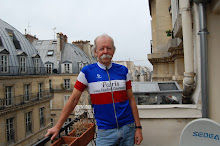We love the big canyon but three days in a row would probably be overdoing it, particularly when there are other attractions around.
This morning we headed into Flagstaff and then north to the loop road through Sunset Crater Volcano National Monument and Wupatki National Monument. My national parks access pass gained us admission to both national monuments.
We mini-paused at the visitor center of Sunset Crater Volcano and then proceeded on down the road. And pretty much instantly went "Whoa!!!!" This is the Bonito Lava Flow, remnant of the most recent eruption of Sunset Crater Volcano some time between 1040 and 1100.We don't have anything like this in Minnesota.
Cinders from the Sunset Crater eruption blanketed older volcanos creating cinder dunes.
This is the volcano itself. The interpretive literature says that the volcanic process is still active here, that 1,000 years without an eruption is not that unusual in the history of this area. It does say that the next eruption is not likely to be Sunset Crater, that the eruption will be nearby but not here.
The road we were on is a closed loop which leaves Sunset Crater and then provides scenic vistas of a painted desert before entering Wupatki. The haze defeated attempts to capture the desert in photos but in person the views were spectacular.
The road then swings back towards the main highway to enter the Wupatki National Monument. The monument incorporates about 2,700 historic sites inhabited by ancestors of the Hopi people in a period beginning at about the time of the eruption of Sunset Crater Volcano. Volcanic ash from the eruption had made the soil more fertile and favorable for farming.
This is the Wukoki Pueblo. It was a multi-story multi-family dwelling built directly on and appearing to rise from the bed rock.
This is largest ruin in the area, the Wupatki Pueblo.
This structure had more than 100 rooms and was a center for cultural and social life for its residents and other members of the community who lived nearby.
The people were farmers. This is the Citadel Ruins, on top of a low hill but visible for great distances in all directions.
There was farming here as well. The people successfully cultivated corn, cotton, beans and squash.
Our last stop at the monument brought us to the Lomaki Pueblo.
This pueblo is located on a box canyon. Nearby residences can be seen from Lomaki. Those other pueblos are also located on another part of the box canyon.
This is through a doorway at Lomaki. Visible frame right is the Citadel Ruin. Visible frame left is a snow covered mountain. These pueblos are located at approximately 8,000 feet above sea level.
Here's a look into the box canyon where the other group of pueblos is located.
The FT says she has to go home and watch a bunch of old cowboy movies now to bring her vocabulary up to speed for understanding this environment. There are lots of mesas and buttes and dry washes and ponderosa pine and . . . box canyons.
We had late lunch back in Williams at Twister's Route 66 Diner, a venue dedicated to recreating the heyday of the fabled highway, the 1950s. The food was OK but the atmosphere was better.
As we left we noticed this really nice 56 Ford (there was also a restored 57 Chevy parked out front) and that we had once again obeyed an imperative in making our choice of dining spots. It does seem to require that one eat there.
Last night in Williams. Tomorrow we will be changing locations again but hoping to be at our destination in time for the big solar eclipse which should be quite near to sunset where we are going.
Subscribe to:
Post Comments (Atom)














1 comment:
Stunning pictures, again. That lava rock is super exotic looking.
Post a Comment